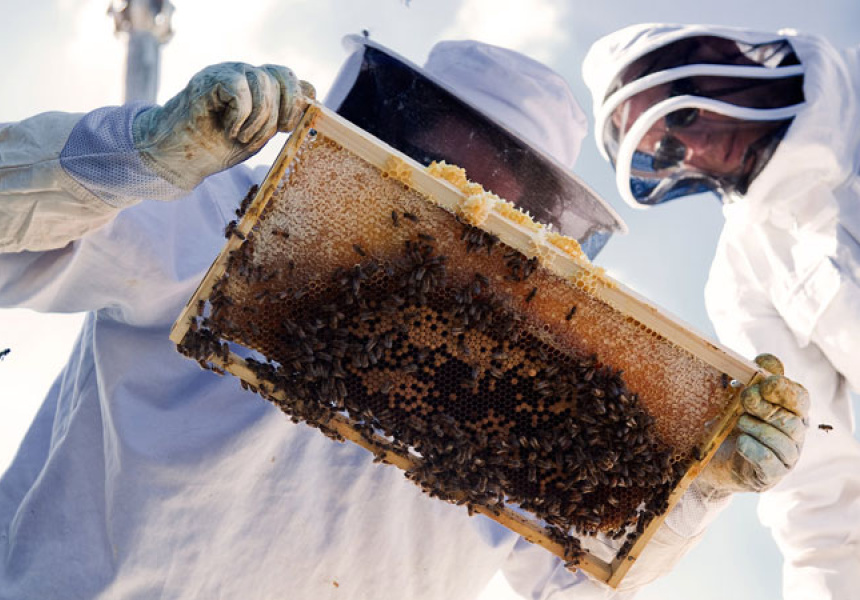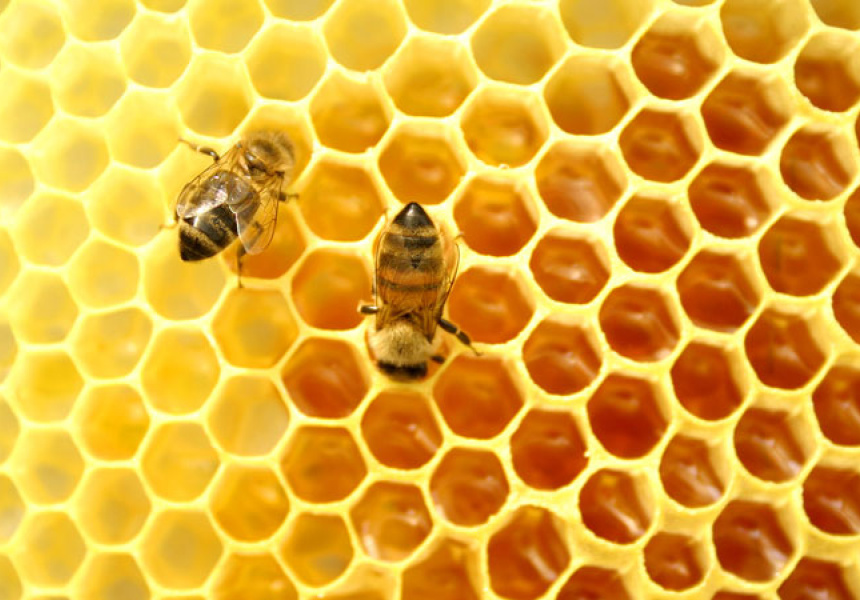What exactly does an urban beekeeper look like? Two images that might come to mind are a fanatical hippy with an excess of welts on their face, or a lost astronaut.
When I meet Mat Lumalasi and Vanessa Kwiatkowski of Melbourne City Rooftop Honey, they’ve left their bee suits at home, are sting-free and look pretty much like nice, normal people. But as we start chatting, it’s clear they are the real deal.
One hundred per cent hand-extracted, untreated pure local honey (“liquid gold”) is what they are producing. But more than that they’re creating a community and raising awareness of the importance of bees and sustainability.
Never miss a Melbourne moment. Make sure you're subscribed to our newsletter today.
SUBSCRIBE NOWAustralia is lucky to be one of the only countries in the world not yet affected by Colony Collapse Disorder, a phenomenon that is wiping out bee colonies all over the world. But that doesn’t mean our bees aren’t in trouble. The Asian bee incursion, loss of greenery and natural disasters are all affecting our bee population.
The idea for Melbourne City Rooftop Honey was inaugurated almost a year ago and since then the local community has jumped behind it.
Ladro in Prahran and Fitzroy were the first restaurants in Melbourne to have hives installed on their roofs. “We approached Ladro to set up a pilot program,” says Lumalasi. “They were really supportive, they loved the idea immediately”. Since then Lumalasi and Kwiatkowski have set up over 20 hives around Melbourne including hives on rooftops at Trunk, Roller Door cafe, La Luna Bistro, Deco Bar, Fatto a Mano and The Alto Hotel.
“It’s snowballed,” says Kwiatkowski. “We have a list of around 115 people wanting hives. We have to keep saying, ‘just wait until spring’.”
To date, Melbourne City Rooftop Honey has produced five flavours, each with unique colours, textures and tastes that depend on the type of flora found in the area. For example, Carlton honey is darker in colour with a leatherwood flavour, whereas Prahran honey is lighter with more of a citrus taste.

“What we’ve seen with the five flavours we have is in true Melbourne fashion,” says Lumalasi. “People are getting behind their suburb, like a football team. Prahran people will say the Prahran honey is better.” By summer, they hope to have a whole league with at least 20 flavours available.
Ingrid Langtry, co-owner of Ladro, describes the whole beekeeping process as an ‘awakening’. “I’ve loved the whole experience, not only from a business perspective but as a person.”
They’ve only had the hives for six months (it takes a full year for the colony to really settle and start producing honey), but they’ve already had two extractions and been able to use the honey in some dishes in the restaurant.
“The honey is so precious we can’t use it all the time,” Langtry explains. “But where possible we try to use it.” If you want to sample the delicious sticky goodness, get the Nord Pizza in Fitzroy or a scoop of their handmade organic honey ice cream at Prahran.
“It’s so much more than just honey. It’s showing people you really care about the environment and supporting local produce,” Langtry says. “The benefits far outweigh the honey.”
Apart from providing us with delicious honey, Melbourne City Rooftop Honey is also involved in the protection of bees and raising awareness about their importance in regard to sustainability. “There are a large proportion of people who don’t realise the importance of bees,” says Kwiatkowski. Those cute little black and yellow striped creatures are not just buzzing around making sweet honey for our pizza, they are hard at work pollinating flowers to maintain our ecosystem. In fact, one third of our food supply can be attributed to bees. “Without them we’d be living off rice and slop,” she adds.
Installing, maintaining and looking after the bees at no charge (a small fee for businesses may be introduced later in the year), Kwiatkowski and Lumalasi are clearly not in it for the money. Those offering up their rooftop also receive a portion of the sweet bounty for their efforts and the rest is sold back to the community.
But beehives aren’t just for businesses. Kwiatkowski and Lumalasi want to make beekeeping accessible to everyone. “For me, beekeeping was an extension of gardening. ‘I grow my own vegetables but how can I be a little bit more sustainable?’” explains Kwiatkowski. “We want it to get people to go beyond just putting a hive on their roof but to embrace it [and] know why they have it.”
And if the response so far is anything to go by, expect to see more of our winged friends buzzing around the city.


